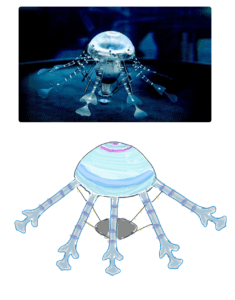Final Project Objective
The purpose of this project is to replicate a swarm behavior in robotics. Swarm behavior is the collective motion of a large number of self-propelled entities. In addition to programming robots to exhibit swarming, we also have to complete a research paper explaining our project and the insights we get on biological behavior.
Ant Behavior and Swarming
For my final project, I’ve decided to expand on my interest on insect behavior. I explored the ink trail experiment and termite movement for my midterm, and now I’m looking into the swarming behavior of foraging ants. Ants have a very sophisticated way of foraging, and their colony is divided into categories to determine everyone’s individual and collective role in bring food into the colony (Traniello 1989). Different species of ants feed on different types of food, but in general they can be classified into two groups according to their feeding habits; sugar ants and grease ants (Deziel 2018). I’m interested in the behavior of sugar ants and how they quickly swarm at the presence of a sugary food.
It may seem chaotic, but it is actually very sophisticated behavior and each individual ant serves a specific purpose.
Robotic Implementation of Sugar Ant Swarms
My plan for this project is program a group of Arduino robots to gravitate towards a central beacon. The idea is that the robots are ants and the beacon is a piece of sugar. In order to this I anticipate I will have to first design the robot that will represent the ant, design the system in which they will recognize the beacon, and then move towards it until they are all surrounding the beacon. For the ant robot, I plan on using the Arduino and connect it to DC motors for movement. I am also considering attaching an infrared receiver which will be how it communicates with and recognizes the beacon. However, I may also use an ultrasonic sensor and make it move closer to the object it recognizes. For the beacon, it could be an infrared emitter if I’m using infrared to communicate, or just a simple object to be recognized by the ultrasonic sensor. I will also have all the robots all moving in one isolated environment, such as a large cardboard enclosure. The idea is that as soon as the robots are on, they will all gravitate towards the beacon in the center which represents ants swarming towards sugar.
